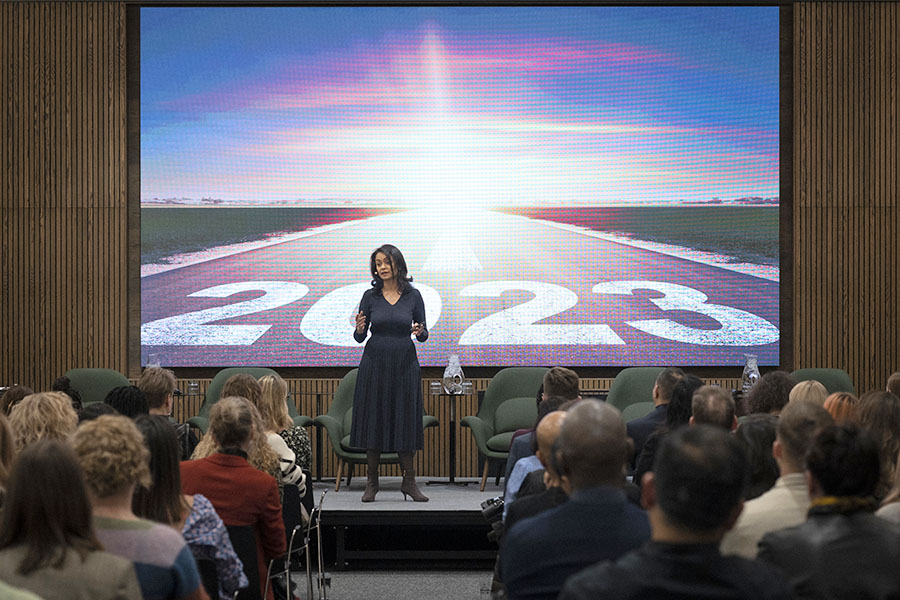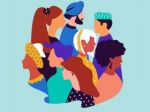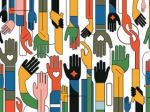
It's time to stop hiring for 'fit': Poornima Luthra
Organisations need to intentionally nurture a culture of inclusion alongside expanding the dimensions of diversity, argues Copenhagen Business School Associate Professor Poornima Luthra
 Poornima Luthra, An Author and associate professor at the Copenhagen Business School
Poornima Luthra, An Author and associate professor at the Copenhagen Business School
Poornima Luthra, associate professor at the Copenhagen Business School, is a recognised author, keynote speaker, business consultant, and leading practitioner-academic in the field of talent management and diversity, equity, and inclusion. She is the author of Diversifying Diversity: Your Guide to Being an Active Ally of Inclusion in the Workplace, The Art of Active Allyship: 7 Behaviours to Empower You to Push The Pendulum Towards Inclusion At Work, and co-author of Leading Through Bias:5 Essential Skills to Block Bias and Improve Inclusion at Work. In an interview with Forbes India, she talks about ways to build lasting inclusion at workplaces and the need for each individual to be a key enabler in the journey. Edited excerpts:
Q. What triggered your interest in the area of diversity?
In my childhood and teenage years, having experienced microaggressions and discrimination at school and in society, I had a keen awareness that the world was not experienced in the same way by everyone. At university, when pursuing an engineering bachelor’s degree, I noticed the lack of adequate representation in classrooms and leadership of potential employers. That eventually led me to pursue a PhD focussed on organisational behavior and talent management. During this programme, I came across social identity theory, intersectionality, and critical race theory, all of which have had a significant influence on my own research and deep desire to make workplaces more diverse, equitable and inclusive.
Q. More and more organisations are now drawing up DEI strategies. How much of these go beyond rhetoric?
We are increasingly seeing organisations move beyond performative DEI efforts to investing resources towards a multi-pronged approach. This includes implementing both systemic change and cultural transformation.
In a large global pharmaceutical company that I have collaborated with, the company’s efforts to enable systemic change involved blocking bias from the various stages of their employee life cycle which addressed their historical lack of representation. In another company, this time a global FMCG company, they prioritised their values in ensuring that their marketing was inclusive to the LGBTQ+ community even in countries with a more conservative stance. They experienced a short-term dip in sales but over the medium term, gained significant customer support.
This systemic change needs to happen alongside cultural transformation by empowering individual contributors, managers and leaders with inclusive leadership competencies through continuous professional development interventions; and having well-resourced and leader-supported employee resource groups, and ensuring team norms to address and block bias in interpersonal interactions.
Q. Diversity alone can’t build inclusion. What else is imperative to move the dial?
Diversity is only one part of the puzzle. Today, we are seeing organisations approach diversity more holistically, finding ways to be more representative not just across visible dimensions but also invisible dimensions—to cover a more complete range of intersectional diversity dimensions that I look at in my book Diversifying Diversity. But this is not enough. Research shows us that it is the culture of inclusion that determines whether there is improved employee well-being, job satisfaction and retention, improved creativity, idea generation and innovation, and better decision-making as a result of the increased diversity.
This means that organisations have to intentionally work on nurturing a culture of inclusion. This involves cultivating an environment where people feel that their voice is heard, valued, and respected; where there is equitable access to opportunities and resources; where people feel that they can be their unique selves without needing to “cover up” parts of their identity; and where people feel like they belong.
Also read: Creating a culture of belonging
Q. Inclusion as an ‘and’ journey and ‘active allyship’– please elaborate.
DEI efforts—until recently—have largely focussed on certain visible diversity metrics, usually binary gender and/or race metrics, driven by quotas or targets set at the organisational or nation-wide level. This has the unfortunate consequence of creating a zero-sum game environment. DEI efforts should not be seen as a pizza or a pie—if you give a piece to one person, others have less. If DEI efforts are done right, there is a more equitable and inclusive space for everyone and everyone benefits. So, we need to move away from seeing DEI efforts as an ‘either-or’ journey to an ‘and’ journey.
One of the key questions I get asked when working with individual contributors and leaders is: ‘What can I do to nurture inclusion?’ The answer lies in allyship. Allyship, as I define in my book The Art of Active Allyship, is the “lifelong process of building and nurturing supportive relationships with under-represented, marginalised or discriminated individuals or groups with the aim of advancing inclusion”. The vast majority of us want to do more. Yet, many of us don’t know what to do. For some, there is also a fear of getting it wrong. This lack of knowing and fear makes us passive allies. We remain as bystanders allowing bias and discrimination to continue to exist. Instead, we have to move towards active allyship where we are engaging in frequent and consistent behaviours that nurture inclusion.
Q. How can one show up as a truly inclusive leader?
In my latest book, Leading through Bias, we look at the five skills needed to be a truly inclusive leader. The first is to know your why and have conviction in the value that diversity, equity and inclusion brings to you, your team, function, and organisation. The second skill is to have clarity about the various forms of biases that exist around us. The third is to be accountable and make efforts to block bias in processes, particularly across the employee life cycle. The fourth skill is to be an active ally and engage in behaviours that nurture inclusion in interpersonal relationships. Finally, this journey is not an easy one and there will be moments of discomfort as we confront our own biases and fears. This requires leading from a place of strength with an attitude of unlearning what we knew and learning new inclusive ways of leading.
Q. ‘Hiring for fit’ – how relevant is this at a time when DEI efforts are gathering momentum?
Our organisations are plagued with what I call the “cookie cutter phenomenon”. We have prototypes of who we consider to be an ideal and successful leader and employee. These cookie cutters at play can be based on gender, sexual orientation, age, abilities, educational background, skills, and race amongst other dimensions of diversity. We hire, promote, and develop people who “fit” these cookie cutters. If someone does not “fit”, we assume that they are not “good enough”.
Cookie cutters create homogeneity, and homogeneity means that people have similar backgrounds, experiences, and skills that they use to approach problems and challenges; that people don’t challenge each other adequately with alternative viewpoints. This creates a sense of comfort that stifles creativity and innovation.
What we need instead is to melt the cookie cutters down and move towards hiring for “add” instead of hiring for “fit”. This means asking ourselves what our teams are missing to be able to perform at our best, and seek people who are different from others who will add value, all the while ensuring that we are nurturing a culture of inclusion where diversity can thrive.
Q. How do ‘fear’ and ‘bias’ play out in the DEI space?
Bias and fear are the two biggest barriers to DEI efforts. As I write on the back of my book Diversifying Diversity, “If you have a brain, you are biased.” Bias cannot be eliminated but we can make efforts to block its influence on our interactions through conscious efforts that start with an awareness to recognise bias when it occurs, and then take steps to actively block its influence.
We see plenty of evidence of resistance to DEI efforts in the media and also in our day-to-day interactions. My current research in examining this resistance shows that it comes from people feeling worry and dread about the change DEI brings, anxiety about getting things wrong, and inadequacy and insecurity in not knowing what to do. These emotions can be tied back to the core emotion of fear. My current research is focussed on what we can do to overcome this fear.

















